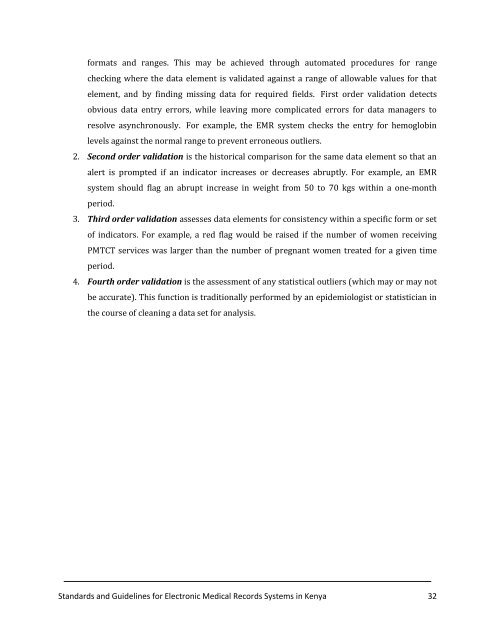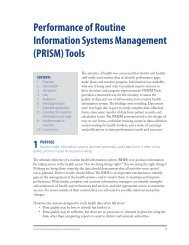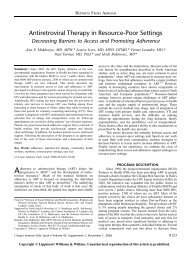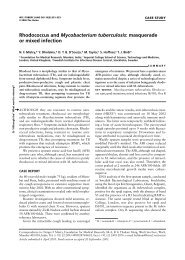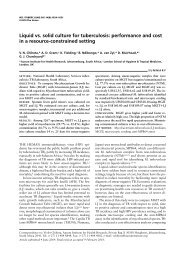Standards and Guidelines for Electronic Medical Record Systems in ...
Standards and Guidelines for Electronic Medical Record Systems in ...
Standards and Guidelines for Electronic Medical Record Systems in ...
Create successful ePaper yourself
Turn your PDF publications into a flip-book with our unique Google optimized e-Paper software.
<strong>for</strong>mats <strong>and</strong> ranges. This may be achieved through automated procedures <strong>for</strong> range<br />
check<strong>in</strong>g where the data element is validated aga<strong>in</strong>st a range of allowable values <strong>for</strong> that<br />
element, <strong>and</strong> by f<strong>in</strong>d<strong>in</strong>g miss<strong>in</strong>g data <strong>for</strong> required fields. First order validation detects<br />
obvious data entry errors, while leav<strong>in</strong>g more complicated errors <strong>for</strong> data managers to<br />
resolve asynchronously. For example, the EMR system checks the entry <strong>for</strong> hemoglob<strong>in</strong><br />
levels aga<strong>in</strong>st the normal range to prevent erroneous outliers.<br />
2. Second order validation is the historical comparison <strong>for</strong> the same data element so that an<br />
alert is prompted if an <strong>in</strong>dicator <strong>in</strong>creases or decreases abruptly. For example, an EMR<br />
system should flag an abrupt <strong>in</strong>crease <strong>in</strong> weight from 50 to 70 kgs with<strong>in</strong> a one-month<br />
period.<br />
3. Third order validation assesses data elements <strong>for</strong> consistency with<strong>in</strong> a specific <strong>for</strong>m or set<br />
of <strong>in</strong>dicators. For example, a red flag would be raised if the number of women receiv<strong>in</strong>g<br />
PMTCT services was larger than the number of pregnant women treated <strong>for</strong> a given time<br />
period.<br />
4. Fourth order validation is the assessment of any statistical outliers (which may or may not<br />
be accurate). This function is traditionally per<strong>for</strong>med by an epidemiologist or statistician <strong>in</strong><br />
the course of clean<strong>in</strong>g a data set <strong>for</strong> analysis.<br />
<strong>St<strong>and</strong>ards</strong> <strong>and</strong> <strong>Guidel<strong>in</strong>es</strong> <strong>for</strong> <strong>Electronic</strong> <strong>Medical</strong> <strong>Record</strong>s <strong>Systems</strong> <strong>in</strong> Kenya 32


